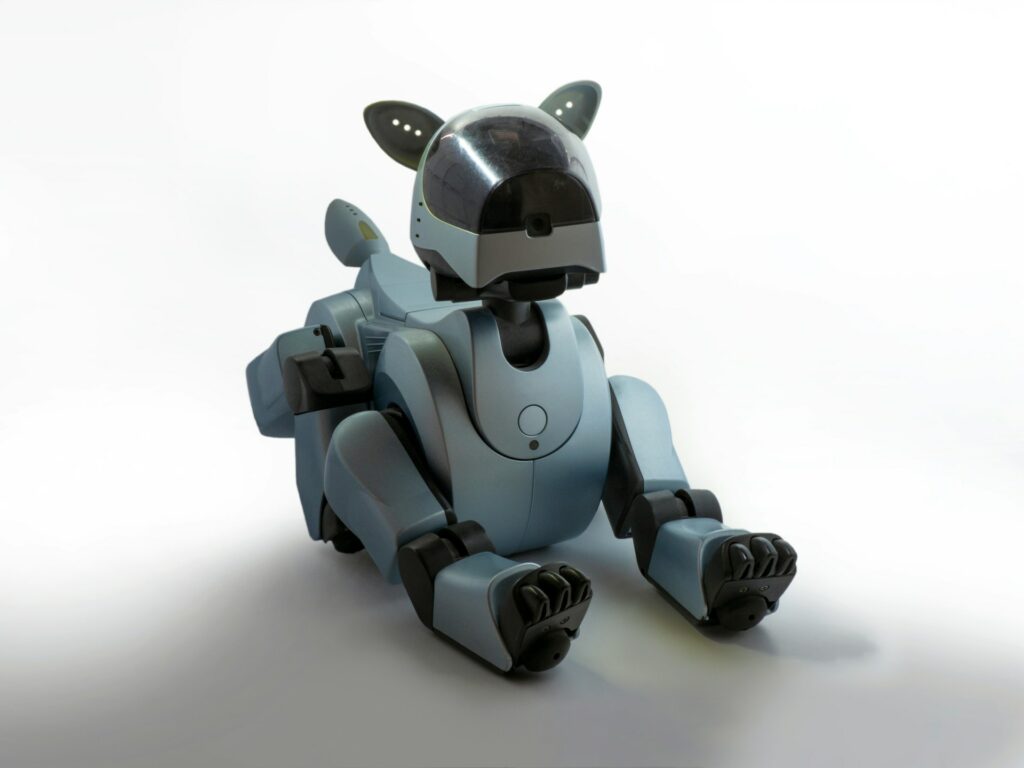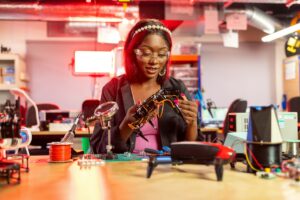These are the cities that have robot dogs in their patrols now.

These are the cities that have robot dogs in their patrols now.
A short while ago, robotic dogs were considered to be either science fiction novels or toys from the future. They were considered to be a peek of what may be possible in the far future. In the year 2025, however, that idea has materialized, and it is not only a showpiece. It is already common practice for robot dogs to patrol streets, parks, airports, and crime sites in a number of locations throughout the United States and overseas. A few are providing assistance to law enforcement. Others are doing surveys of disaster zones or doing inspections of the infrastructure. As a result of their presence, both excitement and worry are being generated.
No longer considered to be just experimental technology, these robotic dogs are now outfitted with cameras, sensors, and powerful artificial intelligence systems. They are now functioning as a component of actual public safety initiatives, and the responses from the general public have been varied. In the context of contemporary law enforcement and public service, are these machines useful tools? Are they, on the other hand, an excessive step toward monitoring and excessive policing? Let’s investigate the places where these robot dogs are currently in operation, determine what they are doing, and discuss the implications of this development for the future of urban life.
The Robotic Dogs Have Arrived in New York City streets.
In the early days of the deployment of robot dogs, New York City was one of the first large cities to get media attention. The New York Police Department (NYPD) revealed in 2023 that it was using a four-legged robot, which was constructed by Boston Dynamics and given the moniker “Digidog,” to assist with potentially hazardous scenarios such as hostage standoffs or building inspections after the collapse of a structure.
The robot, which was shaped like a dog, was able to climb stairs, negotiate narrow passageways, and broadcast real-time footage back to authorities without placing human beings in danger. Nevertheless, the reaction of the general population was anything from silent. A great number of people in New York City experienced unease because they connected the robot with dystopian monitoring or military rule. The initiative was put on hold by the city in response to criticism from the general public; but, by the year 2024, it was secretly resurrected with revised procedures and more openness.
Within the year 2025, these robots will have resumed their restricted patrols and will be operating in conjunction with bomb squads and emergency teams. The fact that they are not patrolling the streets like beat officers does not change the fact that they are often used in high-risk situations when the lives of people might otherwise be at danger.
The Robo Patrol and the Culture of Technology Meet in San Francisco and Los Angeles
When it came to communities in California that were influenced by innovation, it seemed almost inevitable that robot dogs would find a place to call home. The areas of San Francisco and Los Angeles, both of which are centers for developing technology, have started testing robotic canines for a variety of municipal tasks.
Robot dogs have been put to use in San Francisco for the purpose of examining infrastructure that is quite difficult to access, such as below bridges or within sewage pipes. This was accomplished via a partnership between the city’s public works department and local robotics businesses. The goal was to utilize these gadgets not as law enforcement officers but rather as technical assistants, which would help avoid expensive and risky manual inspections.
Los Angeles has adopted a strategy that is rather apart from the norm. The usage of robot dogs for the purpose of patrolling private property has been used by a number of local security organizations, particularly in gated communities, construction zones, and warehouses. These robots are outfitted with motion sensors, sirens, and night vision cameras, and they capture footage for inspection while simultaneously alerting human staff members to the possibility of an attempted break-in.
Despite the fact that they are not directly under the jurisdiction of the police, their usage has sparked ethical arguments, particularly concerning issues of privacy, false alarms, and accountability. It is not always accepted when walking robots equipped with cameras are present in communities where inhabitants already have the impression that they are being over-monitored.
In the field of robotic policing, Singapore is a global pioneer.
Many people are surprised by the level of accuracy and self-assurance that Singapore has shown in its leadership role in the robotic patrol movement. Singapore is located halfway across the globe. In the course of the COVID-19 epidemic, the nation placed robot dogs in parks in order to carry out social distancing surveillance. The purpose of these devices was to broadcast pre-recorded messages that encouraged people to spread out and adhere to the norms that govern public health.
However, Singapore’s interest in robot patrols continued long after the epidemic had subsided on its own. The federal government has initiated the testing of robotic canines for larger surveillance activities, such as the monitoring of restricted locations and the detection of dangerous conditions. Their technologies are able to evaluate behavior, identify motions that are questionable, and automatically report events.
The residents of Singapore, in contrast to those living in Western cities, usually embraced the technology. This was partially owing to the cultural focus that Singapore places on developing new technologies and ensuring safety. Nevertheless, privacy activists have raised red flags over the amount of monitoring that is excessive and whether or not the line between safety and control is being crossed.
Houston, Dallas, and Beyond: Expanding the Use in the U.S.
A number of other cities in the United States have also adopted the trend of robotic patrols, mainly in the state of Texas. Experiments with robotic dogs for use by fire departments and hazardous material units have been initiated in the departments of Houston and Dallas. In these cities, robot dogs are used to penetrate surroundings that are hazardous for human habitation, such as areas where chemical spills have occurred or buildings that are on fire.
By collecting data, streaming pictures, and detecting heat levels, the robots provide assistance to first responders in the planning of their activities without putting workers in unnecessary risk. Because these applications are more concerned with safety than they are with surveillance, they are less likely to spark controversy. However, as these robots continue to improve their capabilities, there is always the risk that their functions may extend to include those of law enforcement in ordinary situations.
What these robot dogs are capable of doing (and what they are yet unable to do)
Robot dogs are not yet patrolling streets in the same manner as human cops, despite all the fanfare. The majority of them are operated remotely or are semi-autonomous, meaning that they follow predetermined routes or orders from humans. They have the ability to walk, climb stairs, negotiate challenging terrain, and gather data using cameras, microphones, heat sensors, and GPS.
Additionally, some of them are able to evaluate air quality, detect barcodes, and provide pre-recorded warnings. However, they are not yet capable of real-time decision-making, the pursuit of suspects, or the interpretation of complicated human behavior. Consequently, this indicates that they are not replacing cops — at least not yet — but rather augmenting them in certain events and circumstances.
Despite this, rapid progress is being made in the field of artificial intelligence. Within the next several years, it is possible that these robots may be able to do a great deal more than merely data collection or monitoring. Because of this, municipalities need to immediately begin considering the need of regulation, transparency, and public accountability.
Awe, caution, and resistance are the responses from the public.
A typical pattern of responses has been seen wherever robot dogs have been deployed: first, there has been a sense of wonder, and then there has been a profound sense of doubt. It is common for people to congregate in order to shoot pictures or films with the devices. The children are astonished. On the other hand, not long after that, significant worries surface, particularly around the collecting of data, monitoring, and the growing militarization of law enforcement agencies.
There is a contention among civil rights organizations that the presence of robots in public settings alters the behavior of individuals. Having the knowledge that you are being observed by a self-sufficient machine might make you feel less free, even if you are not engaging in any inappropriate behavior. Others have pointed out that depending on how they are developed and used, these devices have the potential to become instruments that are used for discrimination or sociological profiling. Presently, city leaders are confronted with a challenging balancing act: they must embrace technology while also safeguarding the dignity and privacy of the people who reside in these communities.







